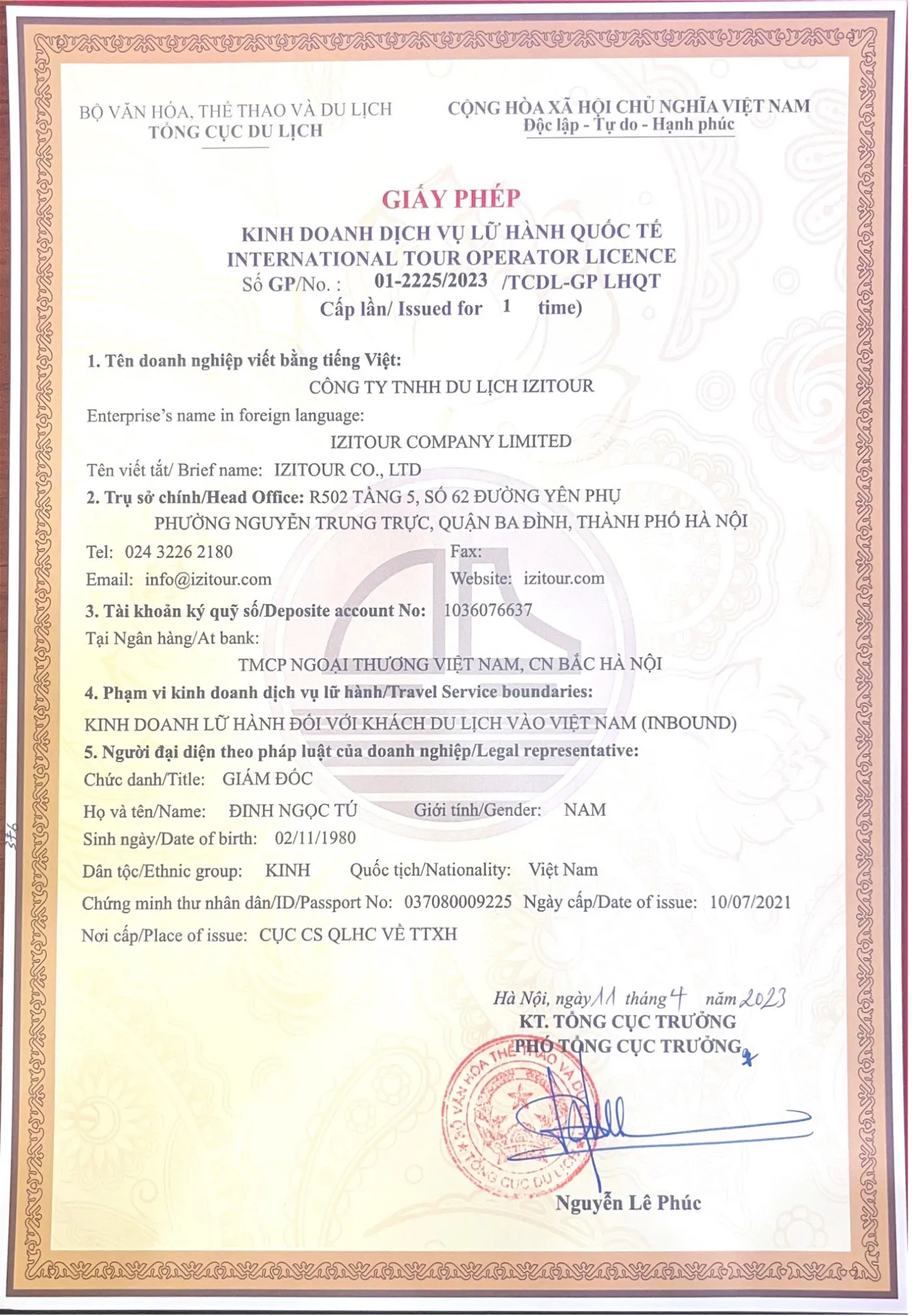Hue City is known for its serene and beautiful landscapes and the hospitable local people. Besides, it has a rich history and unique cultural traditions and festivals. Tourists visiting Hue enjoy strolling through the streets to see the charming Hue girls and women dressed in the traditional Vietnamese "ao dai" and tasting the delicious royal cuisine. A must-visit in Hue are the mausoleums built during the Nguyen Dynasty. Travelers also cannot miss Hue Imperial City. The Hue Citadel boasts numerous famous architectural landmarks. For more detailed information about visiting Hue, refer to the following article!
1. Introduction to Imperial City of Hue
This is a historical site belonging to the Hue Monument complex, which was built and preserved since the Nguyen Dynasty. It is located right by the romantic Perfume River on 23/8 Street in Thuan Hoa District, Hue City. Constructed between the 19th and early 20th centuries, it holds significant cultural values featuring the feudal court. In 1993, Hue Imperial Citadel was recognized by UNESCO as a World Cultural Heritage Site.
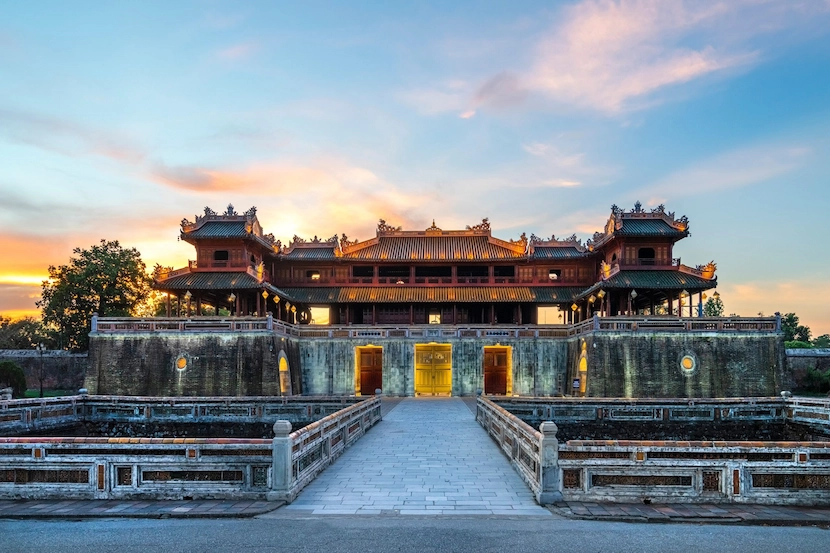
The construction process of the Hue Citadel took around 30 years and involved extensive works like filling rivers, digging holes, and building citadels. To accomplish this massive undertaking, the Nguyen Dynasty employed thousands of workers and used millions of cubic meters of earth and bricks.
Today, when you visit the Imperial City of Hue, you'll be amazed by the splendid beauty of the Hue imperial palaces and the ancient charm of temples and shrines. The heritage site complex includes the Imperial Citadel, where the kings held royal courts, and the Purple Forbidden City, where the king and royal family resided. Furthermore, you can also find other renowned structures in different areas of Imperial City, such as Thai Hoa Palace, The Ngo Mon Gate, Can Chanh Palace, and more.
- Hue Imperial City opening hours: The Hue Imperial City and other historical attractions of the Complex of Hue Monuments are open to visitors daily from 6:30AM to 5:30PM (in summer) and 7:00AM to 5:00PM (in winter).
- Hue Imperial City entrance fee: Adults: 200,000 VND/pax; Children (aged 7 to 12): 40,000 VND/pax
2. The best time to visit the Imperial City of Hue
For the best Hue Imperial City tour experience, you should pick the right time to visit. These are the most suitable time periods for traveling to Hue City.
- Spring (January to March) is a great time to visit Hue. The weather is cool, and the scenery is beautiful and poetic. Trees are blooming, flowers brighten up the streets, and the Perfume River looks mesmerizing.
- The festival season in Hue is from April to June. During this time, the Hue Festival, the biggest and most unique festival in Central Vietnam, takes place. If you visit Hue Imperial Citadel at this time, you can enjoy the festival and learn about the local culture.
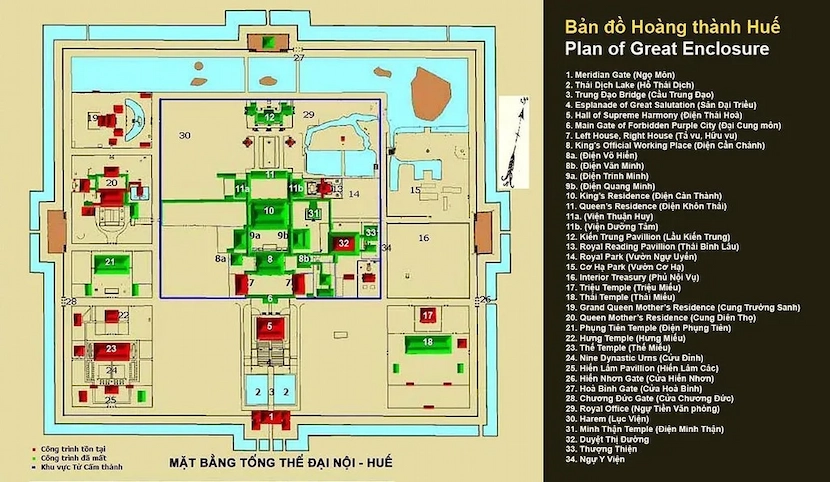
Hue Imperial City map of great enclosure - Red blocks are existing architecture
3. Exploring the Hue Imperial Architects
Cong Ngo Mon (Meridian Gate)
The Cong Ngo Mon, also known as the Noon Gate or Meridian Gate, is a remarkable piece of architecture with intricate carvings. It serves not only as an entrance to the Citadel but also as a well-protected fortress with a surrounding moat system. With a history spanning nearly 2 centuries, it stands as an ancient masterpiece in Vietnam.
Situated in the Hue Imperial Citadel, facing south towards the beautiful Perfume River, the meridian gate comprises five entrances. The central gate is exclusively for the king, while the two side gates are for mandarins of literature and military. The outermost gates are designated for soldiers, elephants, and horses accompanying the king.
Above the gate lies the Lau Ngu Phung (Five-Phoenix Pavilion), which is made of solid ironwood and divided into two levels. Visitors will be awed by the nine elegantly crafted roofs, with the central one adorned in yellow and the remaining eight in blue. In the past, all of the important royal ceremonies were performed on the Lau Ngu Phung during the Nguyen Dynasty. From the main hall, the king could see the troop movements and his citizens bringing homage.
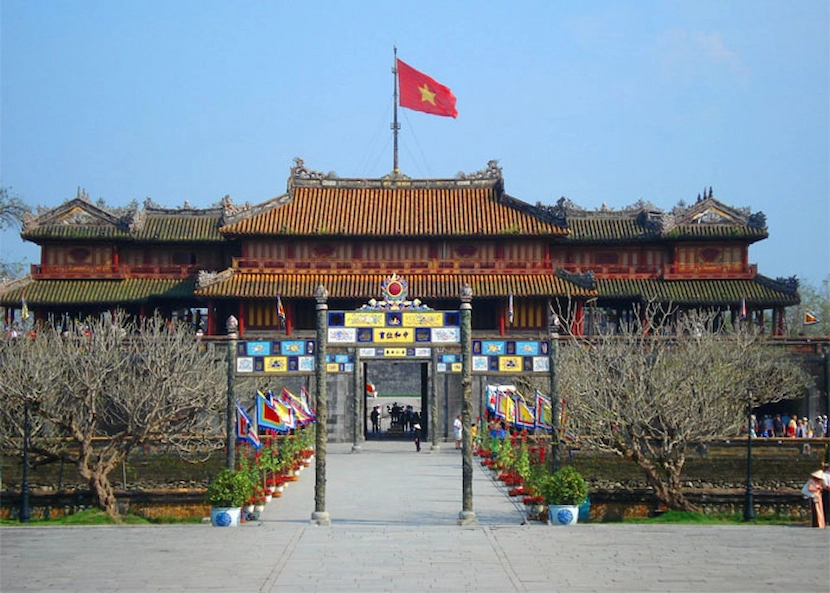
Ngo Mon Gate
Thai Hoa Palace (Hall of Supreme Harmony)
Thai Hoa Palace, constructed within the Hue Imperial Citadel, represents the authority of the Nguyen Dynasty. It holds great significance as the central venue for important court ceremonies during that time. The palace's unique and artistic architecture, mainly made of ironwood with elaborate carvings on the roofs and columns, leaves a profound impression on visitors. At the heart of the palace stands the king's throne, placed with utmost dignity, radiating the majesty of the nation's ruler.
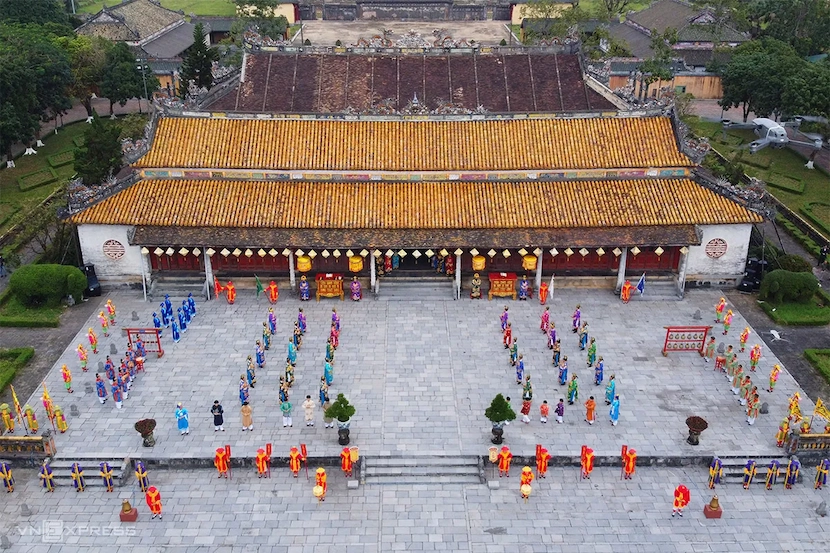
Thai Hoa Palace
Dai Cung Gate
Dai Cung Mon, the main gate of the Purple Forbidden City, was constructed in 1833 by King Minh Mang. It consists of 3 doors, 5 rooms and is made entirely of wood, topped with royal yellow tiles. Sadly, it was destroyed during a war, however it is in research to reconstruct.
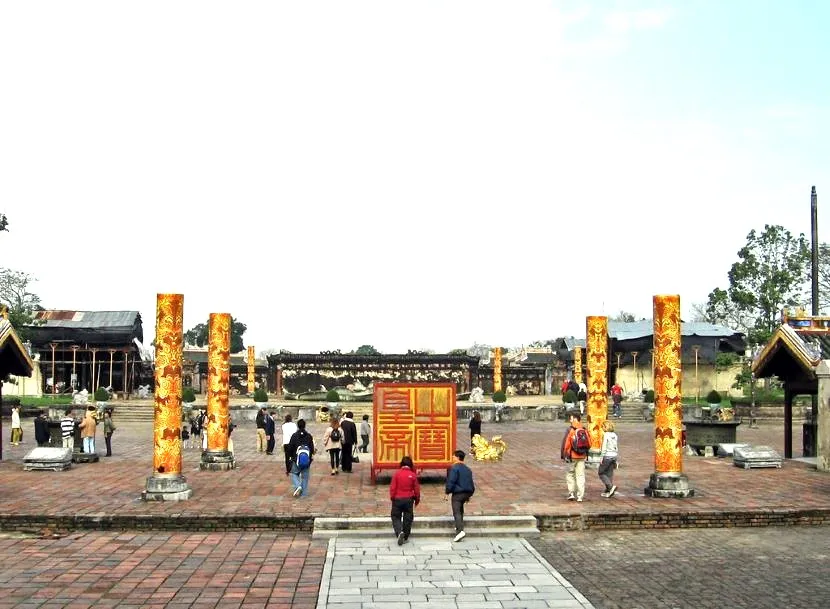
Dai Cung Mon background with marking pillars and royal seal
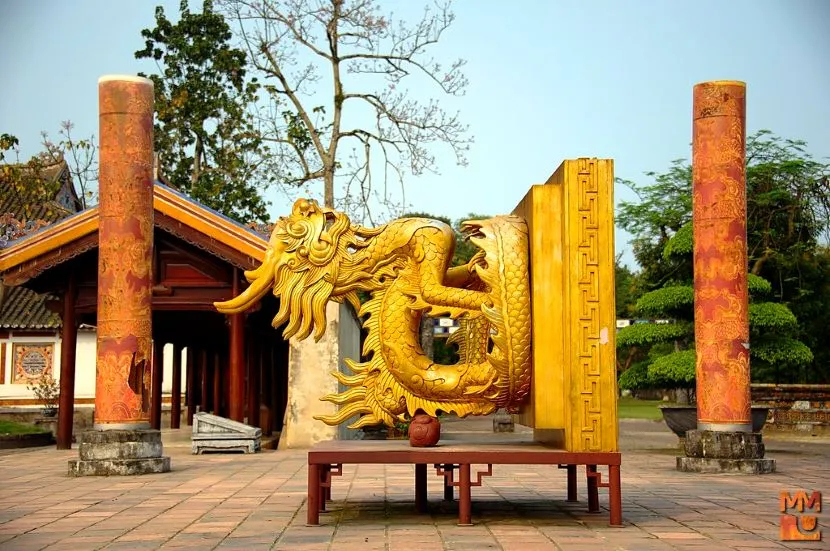
Royal seal in Dai Cung gate
Ta Vu and Huu Vu (Left House and Right House)
Ta Vu and Huu Vu were built in the early 19th century and are located opposite Can Chanh Palace. Huu Vu was built for military officials of the court and Ta Vu was the place for mandarins. Several important events have happened here like rituals before court ceremonies, national entrance examinations or royal dinners. Currently, many historical artefacts are displayed in Ta Vu, while Huu Vu opens for tourists to visit and take pictures.
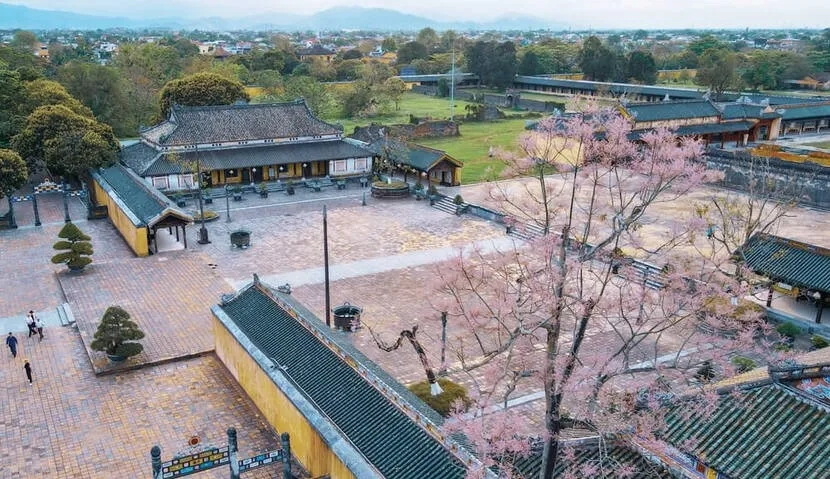
Ta Vu and Huu Vu
Can Chanh Palace
To truly appreciate the beauty of Hue Royal Citadel, you should visit Can Chanh Palace. It showcases a unique architectural style and serves as the king's court. Situated close to Thai Hoa Palace on the same north-south axis, Can Chanh Palace impresses with its grand wooden structure and the exquisite carvings on the ironwood columns and upper frame, making it one of the most beautiful buildings in the Forbidden City. It was burned in 1947 and is currently being researched by the Hue Monuments Conservation Center and experts from Waseda University to prepare for restoration.
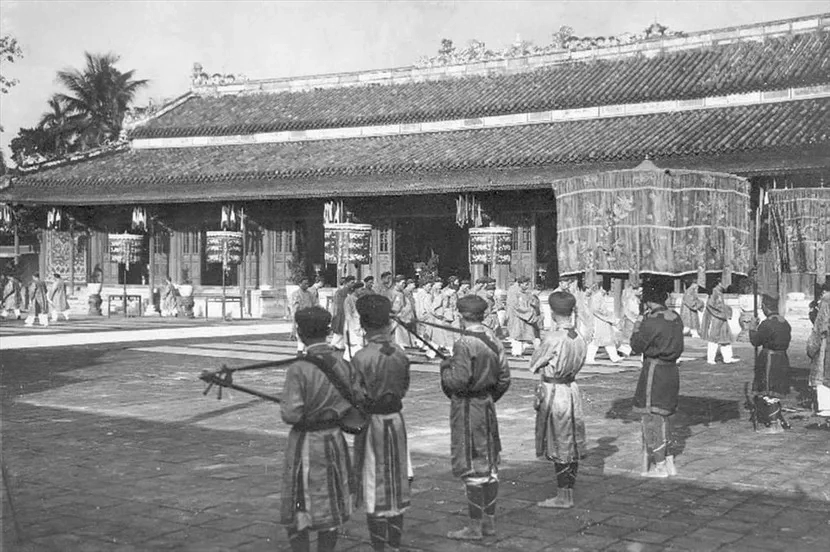
Dien Can Chanh - the King's official working place
Thai Binh Lau (Royal Reading Pavilion)
Thai Binh Lau is also located in the Purple Forbidden City area, where the king often read, wrote or recited poetry in his spare time. The construction of this area was built during the reign of King Khai Dinh in 1919 and completed in 1921. The complex includes 3 parts: foremost, central and back, which are connected by two drainage canals. The front part of the building is engraved with 3 words "Thai Binh Lau" and the two parts are engraved with two texts written by King Khai Dinh. The most distinctive architectural part of the building is the main hall, a 2-story house of 9.55 m height. The roof is covered with yellow yin and yang glazed tiles, symbolising Ngu Phuc, and the two sides of the roof have the image of a powerful dragon.
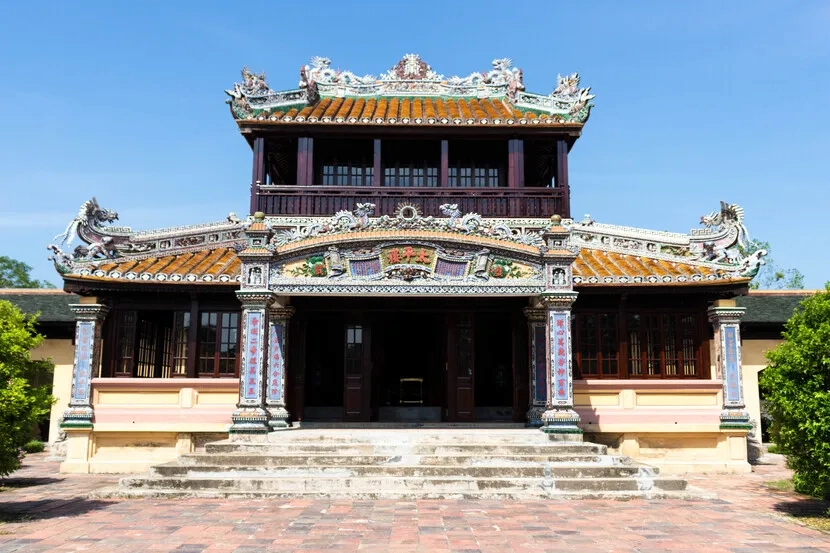
Thai Binh Lau in Hue Imperial City
4. Highlight experiences
If you're not sure how to discover Hue Citadel, just check out the suggestions below. These experiences will make your trip memorable!
Explore the Citadel by a cyclo ride
If you visit the Hue Imperial City, you can use a cyclo to easily tour the vast complex and see all the impressive buildings. Renting a cyclo costs between 30,000 to 50,000 VND/ round. It's a convenient and time-saving way to explore every corner of the Citadel.
Watch the Hue Royal Citadel at night
The Citadel looks stunning at night with its beautiful and bright lights. When evening comes, it blends the charm of an ancient capital with a poetic ambiance. You can stroll around, enjoy the fresh air, and capture wonderful moments in photos.
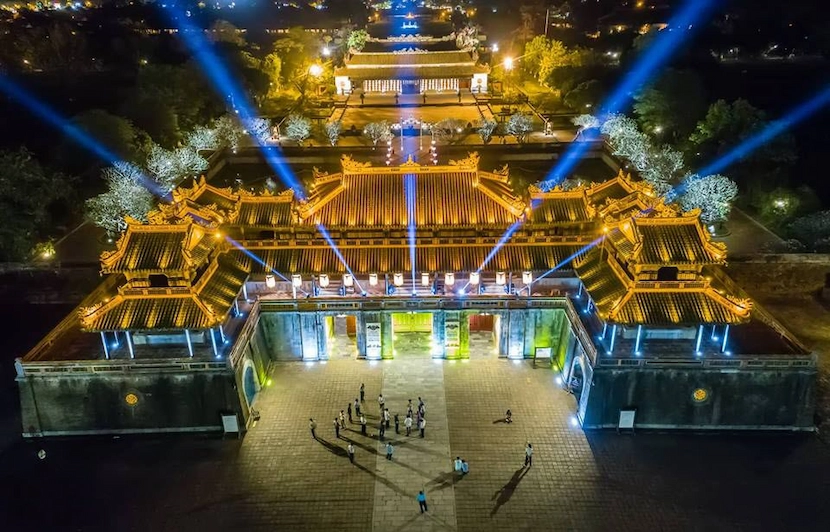
Participate in royal festival activities
The Hue Royal Citadel is a special place that protects the beauty of ancient feudal cultures. It preserves the royal festivals of the Nguyen Dynasty perfectly. If you visit during the Hue Festival, you can join exciting cultural activities and experience the festival's lively vibe. Moreover, you can savor tea on the royal terrace at Dien Tho Palace to gain a deeper taste of Hue's royal traditions.
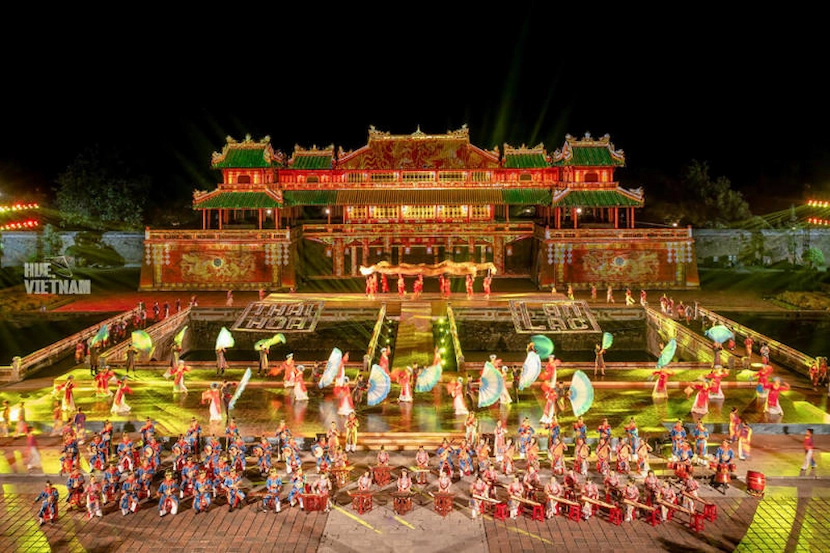
Hue Imperial City holds numerous historical and cultural treasures. When you visit, you'll be amazed by its beautiful architecture and get to enjoy fascinating cultural experiences.
If you require any further information or request for tours, feel free to leave a comment below or contact us directly via email: [email protected] or WhatsApp: +84 382 536 266 for instant assistance.
Read more related articles:
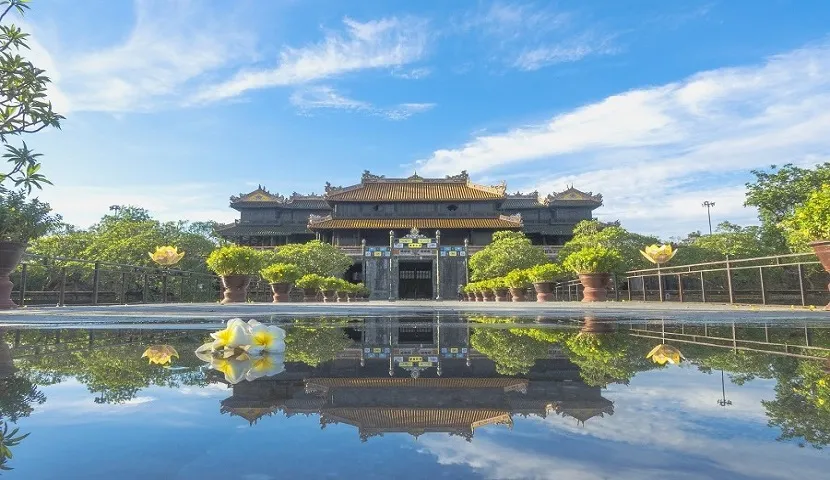






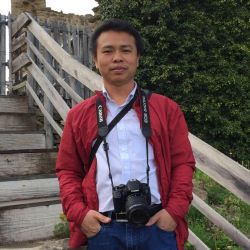
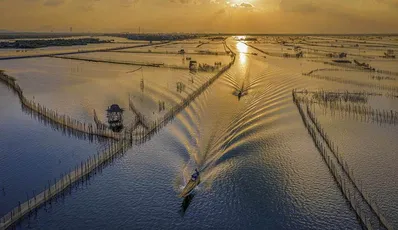
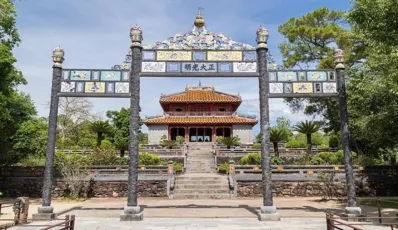
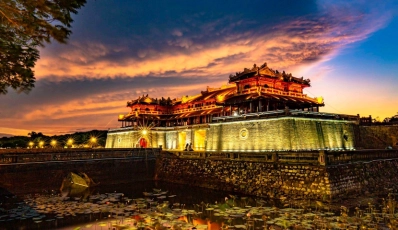
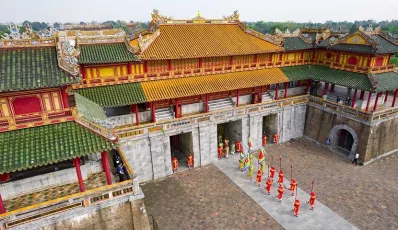
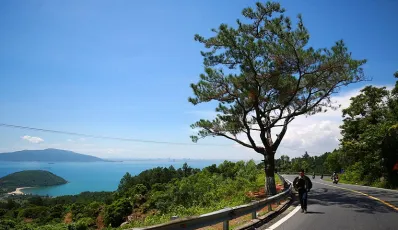
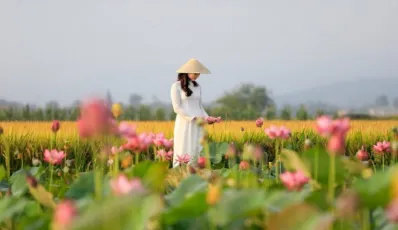
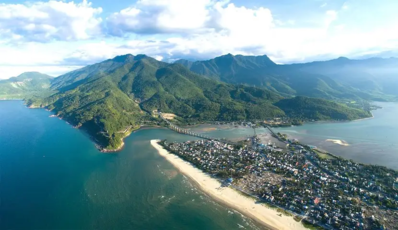
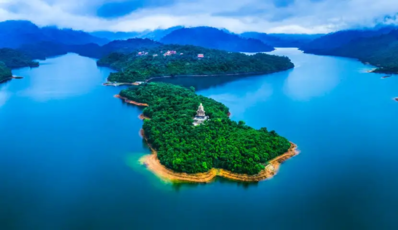
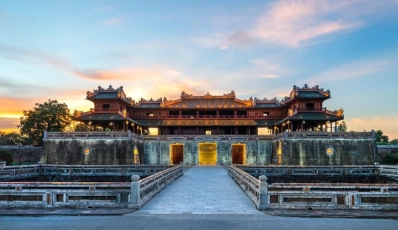
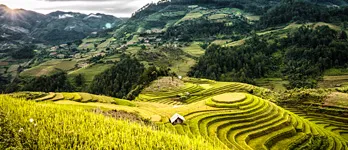
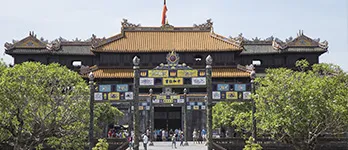
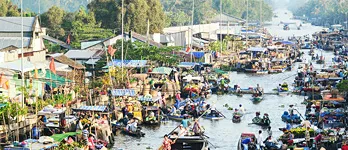

 TRAVELERS' CHOICE 2025
TRAVELERS' CHOICE 2025 